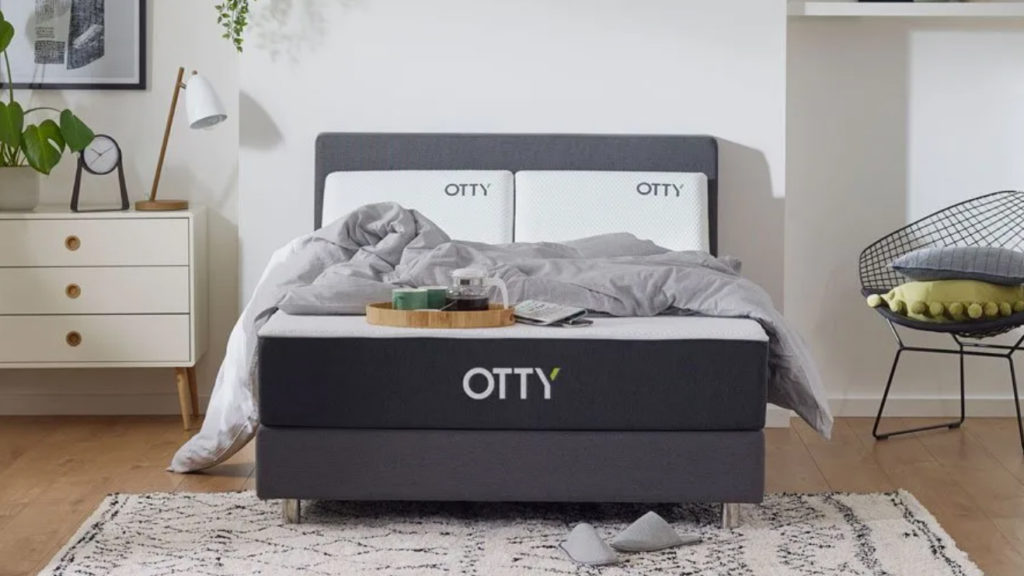NDA is running a series of interviews with leaders at some of the most innovative DTC brands exploring how they are building their brands, ahead of an upcoming report on the DTC market in association with Control v Exposed (CvE).
Andrew Jacobs, Otty Sleep Digital Marketing Manager, discusses the direct to consumer opportunity, why DTC brands need to pace themselves and what they can learn from the ‘traditional’ incumbents.
What are the biggest opportunities for your brand in 2020?
Our business would not have imaginable even a decade ago, when people had little confidence of buying things online. Now it’s second nature, even for big ticket items such as mattresses. Forget the ads with people bouncing in showrooms on beds — the largest seller of mattresses in the UK is Argos, and it does most of its sales online. Things have moved on, and initiatives such as longer-length trials have helped build consumer confidence in the DTC model.
We are looking to build sustainable growth, which unfortunately a lot of our competition fell foul of. For us that means focusing on the UK and Ireland for the time being. Some of our contemporaries are in half a dozen different territories, but in terms of growth you need to have people on the ground to understand those territorial differences. There’s no rush right now for us to go global.
There’s this whole theory of maximizing market share first at a cost of profitability. That might work for apps and brands that require constant repurchasing such as Just Eat and Uber, but a mattress purchase is something you might make every eight or 10 years.
What are your biggest challenges in customer acquisition and retention?
Everything is about reputation, and not everything is in our hands. So, for example, the whole industry suffers from delivery issues because mattresses are bulky, awkward items that only a certain amount of couriers can manage. Unfortunately, the reason why we’re not five stars on Trustpilot is because this is our weak spot.
Potential customers are much more likely now to go to such review sites and read up the information than relying on your website alone. They’d much rather believe 2000 people who give a five star review than anything we can do in terms of advertising. Word of mouth will always be the number one thing that gets you sales you otherwise wouldn’t have got. But it’s a vicious circle in terms of getting started.
A mattress, though, isn’t surprisingly as considered a purchase as you might think. It’s not like a sofa or a dining table where you might expect to wait 12 weeks — you can manage without. Once your existing one is starting to fail you, or you’re moving home, the decision-making is pretty quick. It can be less than four weeks. When we’ve got it in stock you can have it as soon as you like!
What digital channels are most effective for you?
Pretty much all of our current advertising is below the line and digitally based. It’s ideal for us in terms of tracking and measurement. That will change as time progresses and the brand builds — we’ll start to explore other avenues to expand the business such as the more traditional advertising channels.
It’s about using a combination of digital and social channels. You have to understand your audience and find out from a targeting perspective what they’re doing online and then it’s about intent.
How important is brand marketing versus direct response for you?
You need to understand your audience so well. I love these fluffy agencies that say ‘It’s great for the brand’ but how are they measuring that? There are more sophisticated ways of being able to track the likes of branding mediums such as television and radio, as well as halfway houses of video-on-demand and digital audio exchanges. These are ways of being able to educate ourselves on what works for brand and apply that thinking to the other mediums.
Traditional media has its place and always will. Television has a mass audience, as does radio. People’s habits don’t change that intrinsically. If you want mass reach you’re going to have to use the traditional beasts because they are still used significantly by the public.
We continue to plough our budgets into digital and then those hybrid models. The 2020 plan is to look at those hybrids before we go into ‘full’ traditional, which we will do at some point.
What advice would you give ‘traditional’ brands and vice versa?
Stop thinking about 20th Century behaviour. There has never been a time that people’s ways of behaviour and patterns has changed as dramatically as in the last ten years. And that will continue to accelerate. The reason why the High Street is dying and the reason why traditional mammoth brands aren’t keeping up is because they’re not forward thinking. They’re relying on the thinking that ‘this worked for the last 50 years’. It’s head in the sand behaviour.
Those that are thinking about what people are doing now and applying this to their businesses will be the ones that succeed. The clever traditional businesses are those which are seeing who is doing well, buying them and learning from the inside out. Dollar Shave Club, now owned by Unilever, is a great example of this.









